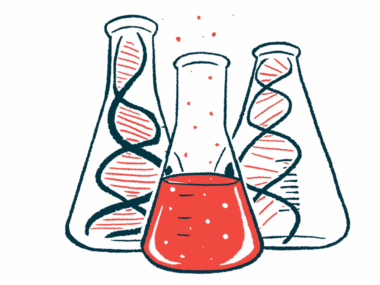Immune cells in blood may be glioma biomarkers: Study
Signatures may aid in diagnosis, outcome prediction, researchers say
Written by |

A study found that analyzing levels of immune cells and related molecules in the bloodstream of people with glioma can accurately distinguish between different tumor grades, glioma subtypes, and patient outcomes, potentially aiding in diagnosis and treatment decisions.
“[Immune signatures] can serve as a robust non-invasive diagnostic and prognostic biomarker in glioma, thus promoting clinical management in screening, stratification, and treatment optimization,” the researchers wrote in the study, “Evaluating the Diagnostic and Prognostic Value of Peripheral Immune Markers in Glioma Patients: A Prospective Multi-Institutional Cohort Study of 1282 Patients,” published in the Journal of Inflammation Research.
Gliomas are a group of brain tumors that affect glial cells, which support nerve cells in the brain and spinal cord. Gliomas vary widely in their aggressiveness, or grade, with some growing more slowly while others are highly aggressive.
A glioma diagnosis typically involves a physical and neurological exam, as well as imaging scans to detect tumors. To confirm a diagnosis, a patient must undergo a biopsy, in which a sample of the tumor tissue is collected through a small hole in the skull. This invasive procedure comes with the risk of hemorrhage or neurological damage.
Emerging evidence shows that anti-tumor immune responses near the tumors are highly suppressed, particularly in high-grade glioma, the most aggressive form of the cancer.
Blood biomarkers could lead to simpler, cheaper tests
A team in China set out to investigate whether the immune signature in peripheral blood — the bloodstream outside the brain and spinal cord — may serve as a biomarker to support a glioma diagnosis and predict outcomes.
“[Blood] parameters are more accessible, cost-effective, and can be measured using standardized testing methods compared to tumor tissue,” the team wrote.
The researchers collected blood samples from 1,282 patients with primary glioma, 57.2% of whom were men. More than half (59.3%) had grade 4 glioma, the most aggressive form. Glioblastoma was the most common glioma subtype (63.7%), followed by anaplastic oligodendroglioma (4.9%).
The team measured the levels of various immune cells and related molecules.
Results showed that the percentage of natural killer cells, or NK cells, was significantly higher in grade 4 cases and those with glioblastoma than in those with grade 1-3 gliomas and other subtypes (astrocytoma, oligodendrocytoma, anaplastic astrocytoma, and anaplastic oligodendroglioma).
“Our study, for the first time, revealed a positive correlation between the higher percentage of NK cells in peripheral blood and the glioma grades,” the researchers wrote.
The percentage of T-cells, T-helper cells, and B-cells was significantly lower in patients with higher-grade gliomas compared with lower-grade tumors. Moreover, patients with less aggressive glioma subtypes, such as astrocytoma and oligodendrocytoma, had higher overall levels of T-helper cells than those with glioblastoma.
In an outcome analysis, patients with high levels of certain antibody components, called immunoglobulin light chains, in the bloodstream lived longer than those with lower levels. In contrast, patients with glioblastoma or other high-grade tumors with higher B-cell levels had shorter survival times.
“These results suggest the pro-tumor functions of [B-cells] in glioma patients,” the team noted.
When the team examined diagnostic potential, the combined percentages of NK cells, B-cells, and the immune protein C4 significantly distinguished grade 1 from grade 4 glioma with an accuracy of 87.9%. Combining the levels of T-helper, NK, and T-cells differentiated grade 2 from grade 4 glioma with an accuracy of 84.5%. Merged NK, T-cell, and C4 levels discriminated between grade 3 and 4 cancers by 71.1%.
For glioma subtypes, the combined percentages of NK and T-helper cells distinguished between glioblastoma and astrocytoma with an accuracy of 77.3%, and between glioblastoma and oligodendrocytoma with a predictive value of 75.3%.
“We will confirm the diagnostic and prognostic value of [immune signatures] in a larger-scale cohort, including pre- and post-treatment glioma patients,” the authors concluded. “Meanwhile, we would explore the underlying mechanism that how the light chain immunoglobulins influence glioma progression and response to immunotherapy in glioma.”







